The signs of self injury can often be difficult to identify. Once an individual identifies the symptoms and side effects of self injury, the next step in the recovery journey become clear.
Understanding Self Harm
Learn about self harm
Self-harm, which may also be referred to as self-injury and self-mutilation, is a relatively broad term that encompasses a wide range of actions that involve the intentional infliction of pain and/or damage onto one’s own body. Examples of the more common types of self-harm include but are not limited to pulling out one’s hair, pinching, scratching, cutting, or burning one’s skin, hitting one’s head or other body parts on walls or other hard surfaces, and drinking caustic or otherwise harmful liquids.
While self-harming behaviors are clearly dangerous and can be deadly, self-harm is not necessarily indicative of suicidal ideation. Individuals who engage in self-harm may be attempting to punish themselves, to exert a modicum of control over their lives, or to give physical manifestation to emotional pain, but they are not engaging in these behaviors in an attempt to end their lives. Self-harm is also not a form of mental illness; instead, it is often but not always symptomatic of a mental health disorder.
Of course, regardless of the reasons that prompt a person to engage in self-harm, the individual needs some form of help. When self-harming behaviors are symptoms of a mental health disorder, professional care to effectively address the mental health disorder will be necessary in order to alleviate the compulsion to engage in self-harm and empower the individual to deal with future stresses and pressures in a healthier and more productive manner.
Statistics
Self harm statistics
Given the propensity for individuals who engage in self-harm to hide their behaviors even from their closest friends and family members, it is impossible to accurately determine how common such behaviors are. However, considerable research has enabled experts to develop some statistical insights into the prevalence of self-harm. For example, a five-state initiative by the U.S. Centers for Disease Control and Prevention (CDC) to collect accurate self-harm data from hospital visits suggests that the rate of self-harm may range from 116 to 222 per 100,000. The CDC data also suggests that the rate of self-harm among the five studied states is 11 to 16 times greater than the rate of attempted suicide in those same locations.
Causes and Risk Factors
Causes and risk factors for self harm
A person’s risk for engaging in self-harm can be influenced by a variety of genetic and environmental factors, including but not limited to the following:
Genetic: As noted in the previous section, self-harm may be a symptom of a mental health disorder. Many of the mental health disorders that can prompt a person to engage in self-harm, such as depressive disorders and bipolar disorder, have genetic components. A person who inherits a genetic predisposition for such disorders, or whose close relatives have struggled with such disorders, may be at increased risk for self-harm.
Environmental: Certain forms of trauma, including but not limited to abuse during childhood and sexual assault, may increase a person’s risk for engaging in self-harm. Also, people who experience stresses or pressures that exceed their ability to cope may engage in self-harm as a maladaptive means of dealing with these negative experiences.
Risk Factors:
- Gender (self-harm appears to be more common among women than among men)
- Age (most individuals who engage in self-harm first do so during adolescence)
- Family or personal history of mental illness
- History of being abused, neglected, or otherwise subjected to trauma
Signs and Symptoms
Signs and symptoms of self harm
Given the great lengths that many individuals take to hide evidence of self-harm, it may be difficult to determine if an individual has been intentionally injuring him or herself. However, the following are among the signs and symptoms that may indicate that a person has been struggling with self-harm:
Behavioral symptoms:
- Wearing long sleeves or long pants, even in hot weather, as a means of hiding cuts, bruises, scars, and other evidence of self-harm
- Lying or acting deceptively when questioned about evidence of injuries
- Withdrawing from family and friends
- Acting with uncharacteristic recklessness
- Apparent loss of interest in significant activities
Physical symptoms:
- Frequent scrapes, cuts, burns, or bruises
- Scars
- Broken bones
- Patches of missing hair
- Disrupted sleep patterns
- Noticeable weight gain or loss
Cognitive symptoms:
- Dissociation
- Pervasive urge to punish oneself
- Diminished ability to focus or concentrate
- Sense of having no control over one’s life
Psychosocial symptoms:
- Pervasive sense of shame and/or guilt
- Feelings of hopelessness and helplessness
- Low self-esteem
- Anxiety and paranoia
- Drastic mood swings
Effects
Effects of self harm
Ongoing untreated self-harm can expose a person to considerable immediate and long-term damage, including but not limited to the following negative effects and outcomes:
- Organ damage
- Brain damage
- Infection
- Serious physical injury
- Unintentional death
- Strained or ruined interpersonal relationships
- Family discord
- Diminished academic performance
- Job loss and unemployment
- Legal problems due to reckless behaviors
- Withdrawal and/or social ostracization
- Onset or exacerbation of mental health disorders
- Pervasive sense of hopelessness
- Suicidal ideation
- Suicidal behaviors
Co-Occurring Disorders
Self harm and co-occurring disorders
As noted earlier on this page, self-harming behaviors are often symptomatic of a mental health disorder. The following are among the most common mental health disorders that may elevate a person’s risk for engaging in self-harm:
- Anxiety disorders
- Bipolar disorder
- Depressive disorders
- Schizophrenia
- Eating disorders
- Posttraumatic stress disorder (PTSD)


